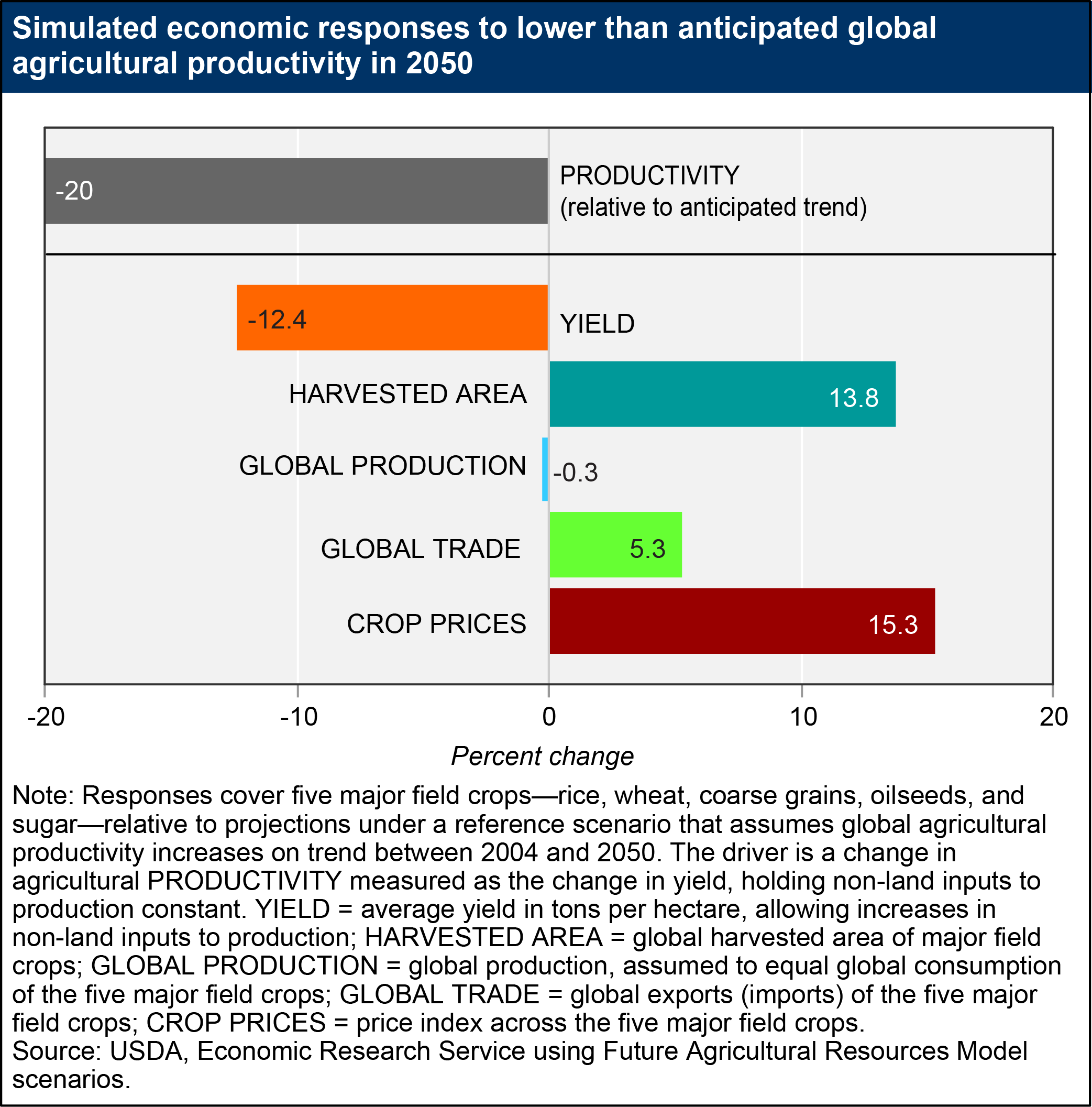The agricultural sector can adapt to uncertainty in future productivity growth
- by Ron Sands
- 9/23/2014

If future agricultural productivity growth is less than anticipated, how will farmers and consumers respond? Using the ERS Future Agricultural Resources Model, researchers simulated the world in 2050 assuming productivity growth similar to past trends, and then simulated the world with a lower rate of agricultural productivity (20 percent lower than anticipated) in 2050. These scenarios reflect considerable uncertainty about future growth in agricultural productivity in the face of global climate change, unpredictable public and private agricultural research and development investments, and myriad other factors that could affect productivity trends. ERS researchers find that reduced productivity growth could lead to a decline in average crop yields, more area planted in crops, and shifts in the location of production, with only a small decline in world average production and consumption of major field crops in 2050. International trade allows worldwide crop consumption to adjust to geographic variation in crop production. Actual yield does not fall as much as land productivity because other inputs increase as crop prices increase. The productivity shock is largely absorbed through intensification of agricultural production and an increase in harvested area. This chart is found in the ERS report, Global Drivers of Agricultural Demand and Supply, ERR-174, September 2014.


